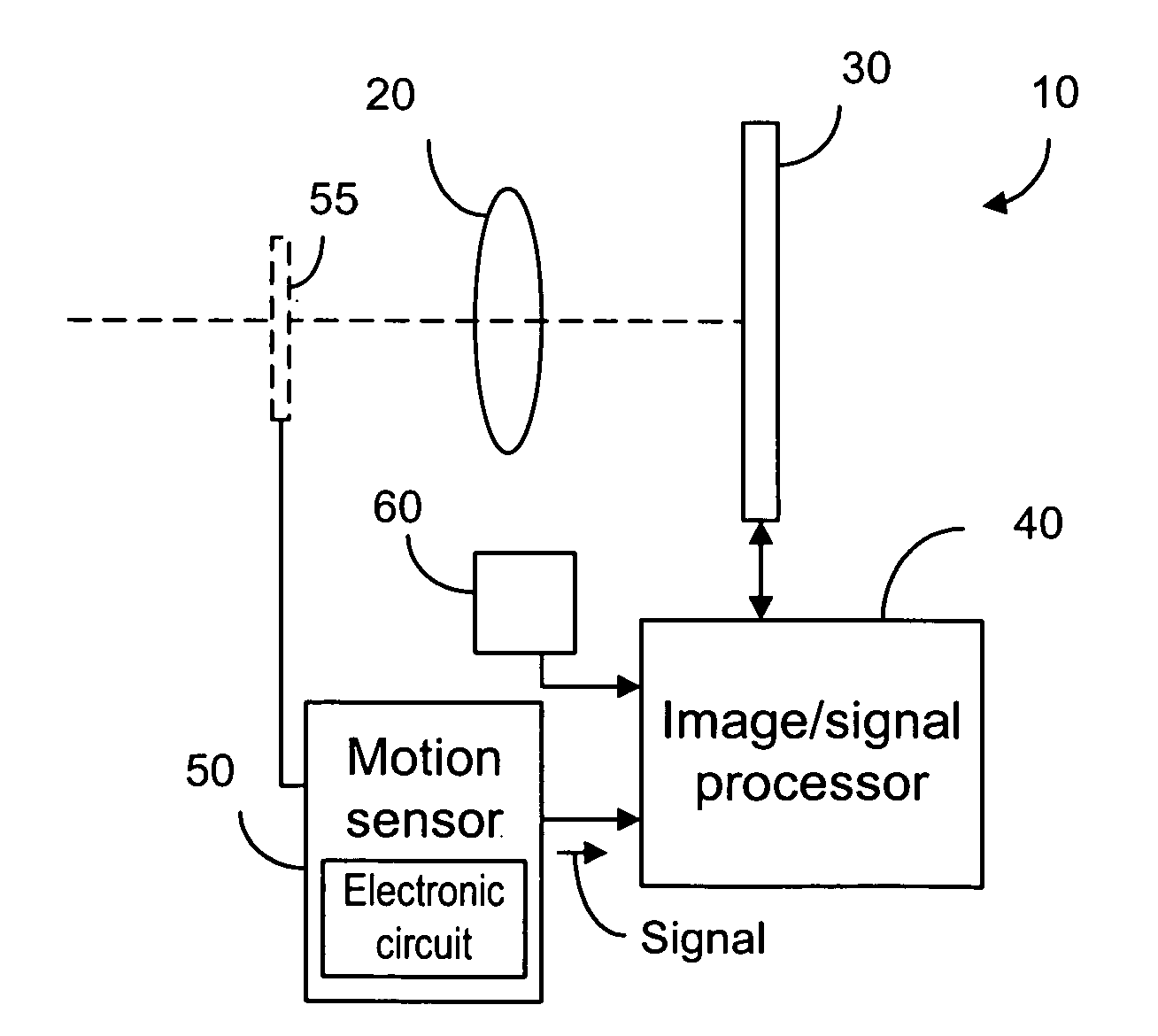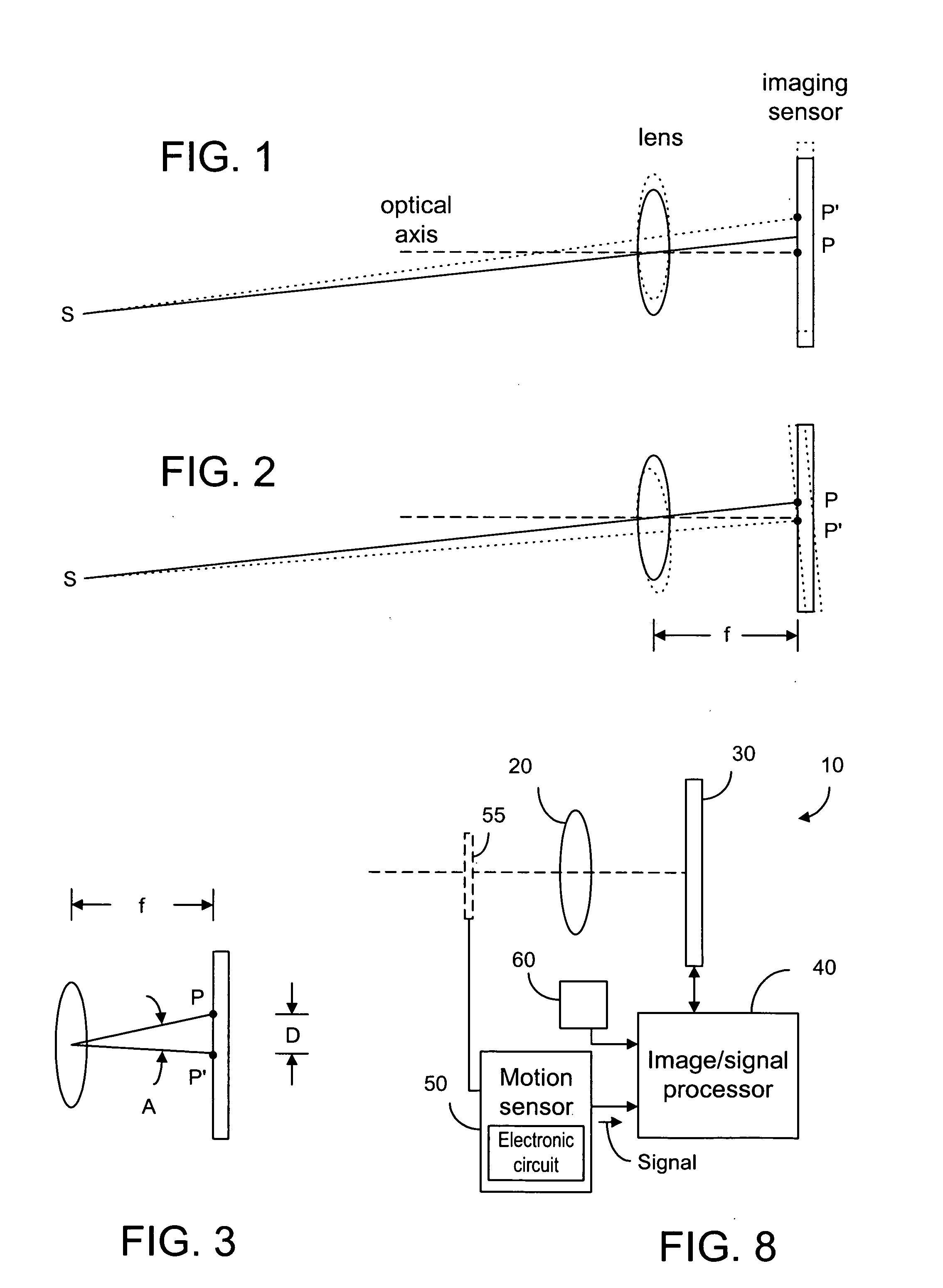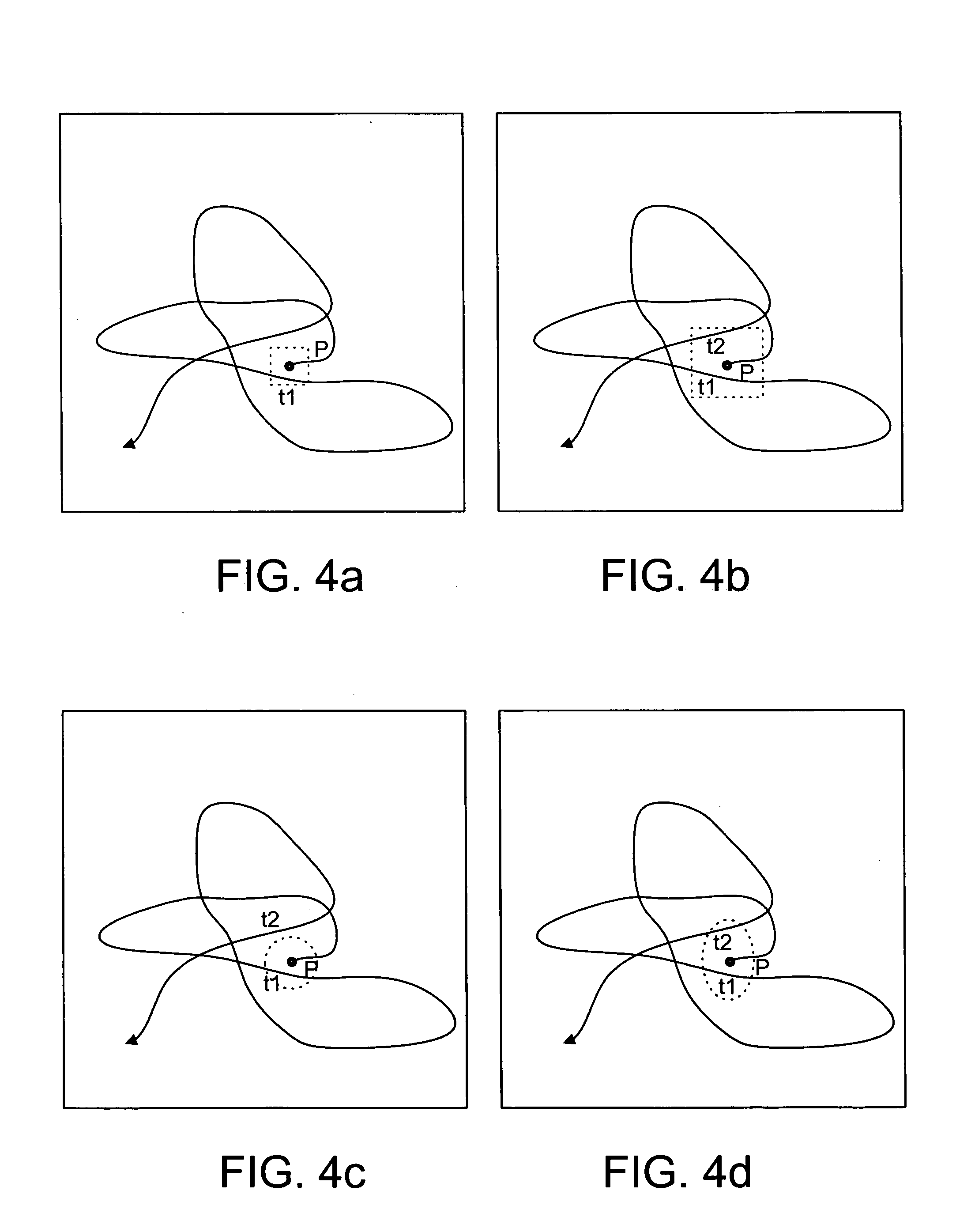Method and system for image stabilization
a technology of image stabilization and image, applied in the field of image stabilization, can solve the problems of motion blur, degradation of the formed image, and almost impossible to avoid unwanted camera motion during a reasonably long exposure or integration time,
- Summary
- Abstract
- Description
- Claims
- Application Information
AI Technical Summary
Benefits of technology
Problems solved by technology
Method used
Image
Examples
Embodiment Construction
[0055]Using a small hand-held device, such as camera phone to take a picture, the movement of the device relative to a scene is most of the time unavoidable. If the exposure time is long, image blur occurs. Image blur is the result of the image shift in the image plane. As shown in FIG. 1, an image point P on the image sensor is shifted to point P′ due to a linear movement of the camera relative to a point S in the scene. FIG. 2 shows the image shift due to a rotational movement of the camera relative to point S. If the image shift distance, D, between point P and point P′ is larger than three or four pixels, then the image quality may be poor. Thus, it is desirable to limit the camera movement such that the image shift is within a predetermined range, say one or two pixels. The image shift distance not only varies with the camera movement, but also with the focal distance, f, between the image plane and the lens. In a camera with a zoom lens, the image shift distance is greater whe...
PUM
 Login to View More
Login to View More Abstract
Description
Claims
Application Information
 Login to View More
Login to View More - R&D
- Intellectual Property
- Life Sciences
- Materials
- Tech Scout
- Unparalleled Data Quality
- Higher Quality Content
- 60% Fewer Hallucinations
Browse by: Latest US Patents, China's latest patents, Technical Efficacy Thesaurus, Application Domain, Technology Topic, Popular Technical Reports.
© 2025 PatSnap. All rights reserved.Legal|Privacy policy|Modern Slavery Act Transparency Statement|Sitemap|About US| Contact US: help@patsnap.com



